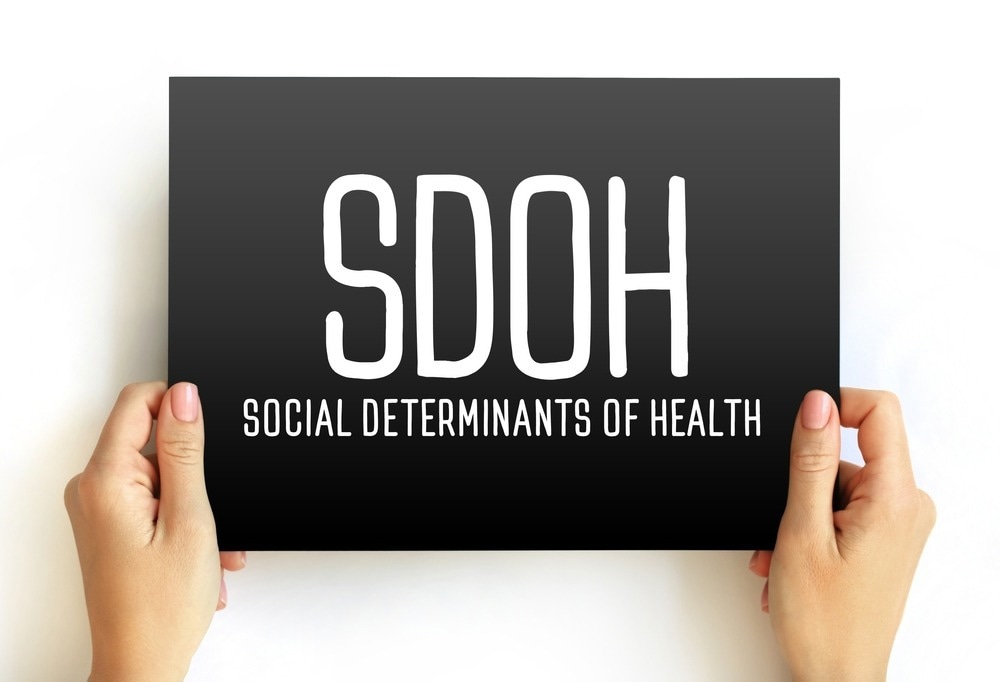Types of SDOH
Significance of SDOH
SDOH and health disparities
SDOH and inequality in the COVID-19 pandemic
References
Further reading
The settings in which people are born, live, learn, work, play, and age are known as social determinants of health or SDOH. These non-medical elements influence a wide range of health, functional, and quality-of-life outcomes and hazards. SDOH includes socioeconomic position, education, neighborhood, physical environment, job, social support networks, and access to health care, among some important factors.

Image Credit: dizain/Shutterstock.com
The global, national, and local distributions of money, power, and resources affect these circumstances. According to the WHO, health disparities — the unfair and avoidable differences in health status seen within and between countries – are primarily caused by social determinants of health.
The public health community has been increasingly focused on the socioeconomic determinants of health over the last two decades. However, evidence has been collected that socioeconomic factors such as money, wealth, and education are the root causes of various health consequences. People's health, wellbeing, and quality of life are affected by SDOH.
Types of SDOH
According to CDC, the social determinants of health can be broadly classified into five categories: healthcare access and equality, education access and quality, social and community context, economic stability, and neighborhood and built environment. The connection between people's access to and comprehension of health services and their health is what healthcare access and equality are all about. It comprises health coverage, access to healthcare, provider availability, and quality of care.
The connection between education and health and wellbeing is explored in Education Access and Quality. Years of study for the highest degree can be used to determine educational level. It can be measured at three levels: individual, home, and community. This includes literacy, language, early childhood education, vocational training, and higher education.
The relationship between the qualities of the context in which people live, learn, work, and play and their health and wellbeing is known as social and community context. This involves community cohesion, civic involvement, discrimination, employment conditions, and incarceration.
Social Determinants of Health
Economic stability involves the relationship between financial resources like income, socioeconomic status, and cost of living to the individual's health. Major factors included in this domain are poverty, employment, food security, and housing stability. Neighborhood and built environment involve association between an individual's place of living, neighborhood, and environment to their health and wellbeing. Factors included in this are quality of housing, access to transportation, air and water quality, availability of quality food, along with neighborhood crime and violence.
Significance of SDOH
According to research, SDOH can impact health more than health treatment or lifestyle choices. Research implies that SDOH is responsible for 30-55 percent of health outcomes. Furthermore, estimations reveal that industries other than health contribute more to population health outcomes than the health sector.
Improving health and eliminating health inequalities requires addressing socioeconomic determinants of health. According to research, various factors influence health outcomes, including underlying genetics, health behaviors, social and environmental factors, and health treatment. While there is no consensus in the research on the extent of these elements' relative contributions to health, studies suggest that health behaviors, including smoking, nutrition, and exercise, as well as social and economic factors, are the key determinants of health outcomes.
For example, children born to parents who have not completed high school are more likely to grow up in an unsafe environment, be exposed to rubbish, and have bad housing. They also have less access to walkways, parks and playgrounds, recreation facilities, and libraries. Furthermore, data suggests that stress has a harmful impact on health across the lifetime and that environmental factors may have multigenerational consequences. Addressing social determinants of health is critical for improving overall health and eliminating health inequities, which are frequently founded on social and economic disadvantages.
SDOH and health disparities
The SDOH significantly impacts health disparities, which are unjust and preventable differences in health status within and between countries. Health and sickness follow a social gradient in countries of all income levels. This implies that the lower the socioeconomic status, the poorer the health is. According to WHO, people born in nations with high human development (HD) have a 19-year advantage over those born in countries with low HD. Subgroups with less education report 100 percent more "bad health" than those with higher education.

Image Credit: Panchenko Vladimir/Shutterstock.com
The National Institutes on Minority Health and Health Inequalities (NIMHD) launched a two-year science visioning process for health disparities in 2015, hosting a series of workshops to propose prospective research directions. Understanding why socially disadvantaged people have disproportionately poor health outcomes has been a major focus of health disparities research. The impact of social determinants of health on population health and health disparities has been demonstrated by compelling scientific data; nevertheless, the mechanisms and pathways involving social determinants of health and how they contribute to health disparities are still unknown.
To combat health inequities, universal access to high-quality care and an emphasis on equitable results are essential. It's also important to address inequality in socioeconomic factors that lead to health disparities.
SDOH and inequality in the COVID-19 pandemic
In racial/ethnic communities, there has been a rising focus on differences in COVID-19 incidence, prevalence, and death. The factors contributing to these differences could include social determinants of health and disease stigma. These populations are thought to be more sensitive to the virus due to social variables that underpin their health problems. Access to healthcare, economic insecurity, poor neighborhood and housing conditions, and resource availability are only a few determinants.
People's habits of social interaction, as well as their sense of security and wellbeing, are influenced by where they live. Health outcomes can also be influenced by the availability of services that improve quality of life. According to WHO, COVID-19 incidence and fatality rates are twice as high as in less deprived locations.
A growing number of programs to address social determinants of health are emerging. Some of these programs aim to raise health-related spending in non-health industries. In contrast, others aim to have the healthcare system address larger social and environmental variables that influence health.
References
- Turner-Musa, J., Ajayi, O., & Kemp, L. (2020). Examining Social Determinants of Health, Stigma, and COVID-19 Disparities. Healthcare (Basel, Switzerland), 8(2), 168. https://doi.org/10.3390/healthcare8020168
- Palmer, R. C., Ismond, D., Rodriquez, E. J., & Kaufman, J. S. (2019). Social Determinants of Health: Future Directions for Health Disparities Research. American journal of public health, 109(S1), S70–S71. https://doi.org/10.2105/AJPH.2019.304964
- Marmot, M., & Allen, J. J. (2014). Social determinants of health equity. American journal of public health, 104 Suppl 4(Suppl 4), S517–S519. https://doi.org/10.2105/AJPH.2014.302200
- Braveman, P., Egerter, S., & Williams, D. R. (2011). The social determinants of health: coming of age. Annual review of public health, 32, 381–398. https://doi.org/10.1146/annurev-publhealth-031210-101218
- Beyond Health Care: The Role of Social Determinants in Promoting Health and Health Equity. (2010). [Online] KFF. Available at: https://www.kff.org/racial-equity-and-health-policy/issue-brief/beyond-health-care-the-role-of-social-determinants-in-promoting-health-and-health-equity
- Social Determinants of Health. [Online] Office of disease prevention and health promotion. Available at: https://health.gov/healthypeople/priority-areas/social-determinants-health
- Social determinants of health. [Online] World Health Organization. Available at: https://www.who.int/health-topics/social-determinants-of-health#tab=tab_1
- Social Determinants of Health: Know What Affects Health. [Online] CDC. Available at: https://www.cdc.gov/socialdeterminants/index.htm
Further Reading
Last Updated: Aug 25, 2022